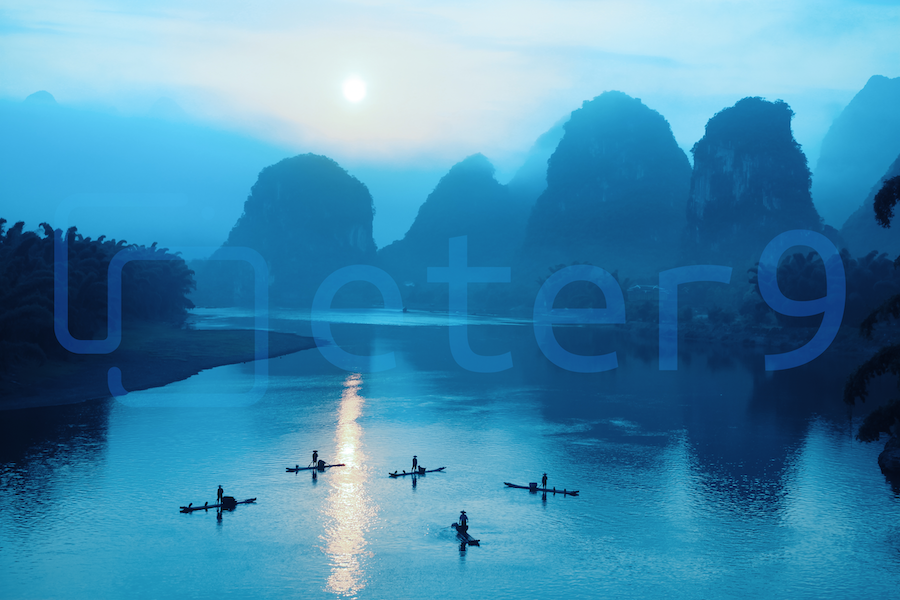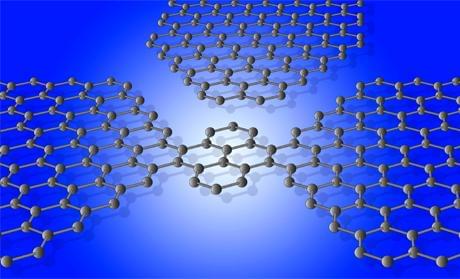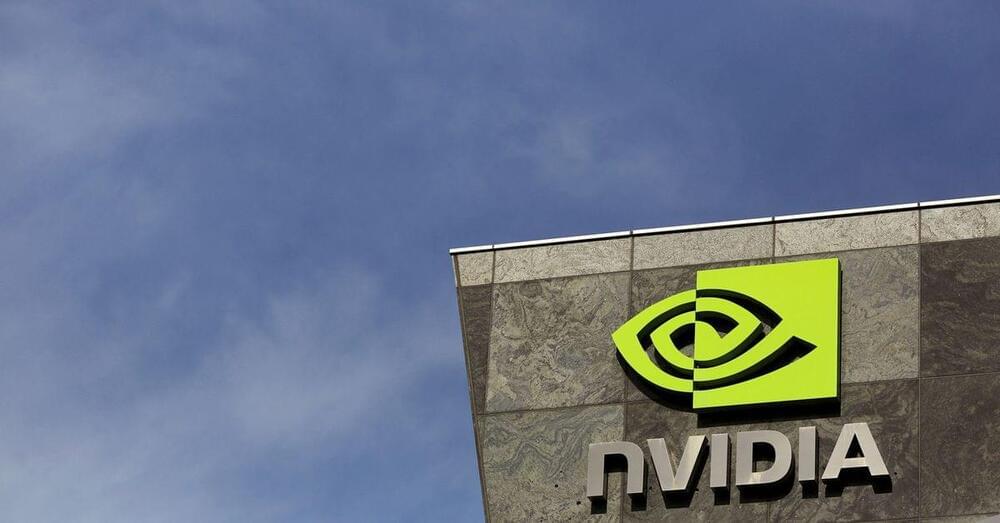Researchers at IBM pitted their 127-qubit Eagle quantum computer against a conventional supercomputer in a challenge to perform a complex calculation – and the quantum computer won.


Researchers at IBM pitted their 127-qubit Eagle quantum computer against a conventional supercomputer in a challenge to perform a complex calculation – and the quantum computer won.
Highlights from the latest #nvidia keynote at Computex in Taiwan, home of TSMC and is the world’s capital of semiconductor manufacturing and chip fabrication. Topics include @NVIDIA’s insane H100 datacenter GPUs, Grace Hopper superchips, GH200 AI supercomputer, and how these chips will power generative AI technologies like #chatgpt by #openai and reshape computing as we know it.
💰 Want my AI research and stock picks? Let me know: https://tickersymbolyou.com/survey/
⚠️ Get up to 17 FREE stocks with Moomoo: https://tickersymbolyou.com/moomoo.
Simply Wall Street’s Nvidia (NVDA Stock) Valuation: https://simplywall.st/stocks/us/semiconductors/nasdaq-nvda/nvidia?via=tsyou.
Taiwan Semiconductor (TSM Stock) Valuation: https://simplywall.st/stocks/us/semiconductors/nyse-tsm/taiw…?via=tsyou.
Timestamps for this Nvidia Keynote Supercut:

It took less than a second to solve a puzzle that super computers would take five years to solve.
A quantum computer, Juizhang, built by a team led by Pan Jianwei, has claimed that it can process artificial intelligence (AI) related tasks 180 million times faster, the South China Morning Post.
Even as the US celebrates its lead in the list of TOP500 supercomputers in the world, China has been slowly building its expertise in the next frontier of computing — quantum computing. Unlike conventional computing, where a bit-the smallest block of information can either exist as one or zero, a bit in quantum computing can exist in both states at once.

Hallucination!
Can “hallucinations” generate an alternate world, prophesying falsehood?
As I write this article, NVIDIA(• is surpassing Wall Street’s expectations. The company, headquartered in Santa Clara, California, has just joined the exclusive club of only five companies in the world valued at over a trillion dollars [Apple (2.7T), Microsoft (2.4T), Saudi Aramco (2T), Alphabet/Google (1.5T), and Amazon (1.2T)], as its shares rose nearly 25% in a single day! A clear sign of how the widespread use of Artificial Intelligence (AI) can dramatically reshape the technology sector.
Intel has announced an ambitious plan to develop scientific generative AIs designed with one trillion parameters. These models will be trained on various types of data, including general texts, code, and scientific information. In comparison, OpenAI’s GPT-3 has 175 billion parameters (the size of GPT-4 has not yet been disclosed by OpenAI). The semiconductor company’s main focus is to apply these AIs in the study of areas such as biology, medicine, climate, cosmology, chemistry, and the development of new materials. To achieve this goal, Intel plans to launch a new supercomputer called Aurora, with processing capacity exceeding two EXAFLOPS(*•, later this year.

A 176-qubit quantum computing platform named Zuchongzhi went online for global users Wednesday night, which is expected to push forward the development of quantum computing hardware and its ecosystem, according to the Center for Excellence in Quantum Information and Quantum Physics under the Chinese Academy of Sciences.
Zhu Xiaobo, chief engineer of the project and professor at the University of Science and Technology of China, said that the research team improved the 66-qubit chip of Zuchonghi-2 by adding control interfaces of 110 coupled qubits, allowing users to manipulate 176 quantum bits.
Zuchongzhi 2 is a 66-qubit programmable quantum computing system made in 2021, which can perform large-scale random quantum circuits sampling about 10 million times faster than the fastest supercomputer at that time.
IBM has announced a 10-year, $100 million initiative with the University of Tokyo and the University of Chicago to develop a quantum-centric supercomputer powered by 100,000 qubits.
Quantum-centric supercomputing is an entirely new – and as of now, unrealised – era of high-performance computing. A 100,000-qubit system would serve as a foundation to address some of the world’s most pressing problems that even the most advanced supercomputers of today may never be able to solve.

Scalable photonic quantum computing architectures require photonic processing devices. Such platforms rely on low-loss, high-speed, reconfigurable circuits and near-deterministic resource state generators. In a new report now published in Science Advances, Patrik Sund and a research team at the center of hybrid quantum networks at the University of Copenhagen, and the University of Münster developed an integrated photonic platform with thin-film lithium niobate. The scientists integrated the platform with deterministic solid-state single photon sources using quantum dots in nanophotonic waveguides.
They processed the generated photons within low-loss circuits at speeds of several gigahertz and experimentally realized a variety of key photonic quantum information processing functionalities on high-speed circuits; with inherent key features to develop a four-mode universal photonic circuit. The results illustrate a promising direction in the development of scalable quantum technologies by merging integrated photonics with solid-state deterministic photon sources.
Quantum technologies have progressively advanced in the past several years to enable quantum hardware to compete with and surpass the capabilities of classical supercomputers. However, it is challenging to regulate quantum systems at scale for a variety of practical applications and also to form fault-tolerant quantum technologies.
China has slipped to number two, but is that intentional?
The US has edged past China when it comes to being home to the world’s fastest supercomputers. The number of machines in the U.S. is now 150, up from 126 last year, while the number of supercomputers from China fell from 162 to 134, Techspot.
Supercomputers are capable of crunching large numbers for advanced scientific applications and have become synonymous with a nation’s pursuit of technological progress.

Utilizing the computational prowess of one of the world’s top supercomputers, scientists have achieved the most accurate simulation to date of objects consisting of tens of millions of atoms, thanks to the integration of artificial intelligence (AI) techniques. Previous simulations that delved into the behavior and interaction of atoms were limited to small molecules due to the immense computational power required. Although there are methods to simulate larger atom counts over time, they heavily rely on approximations and fail to provide intricate molecular details.
A team led by Boris Kozinsky at Harvard University has developed a tool named Allegro, which leverages AI to perform precise simulations of systems containing tens of millions of atoms. To demonstrate the capabilities of their approach, Kozinsky and his team employed Perlmutter, the world’s eighth most powerful supercomputer, to simulate the complex interplay of 44 million atoms constituting the protein shell of HIV. Additionally, they successfully simulated other vital biological molecules such as cellulose, a protein associated with haemophilia, and a widespread tobacco plant virus.
Kozinsky emphasizes that this methodology can accurately simulate any atom-based object with exceptional precision and scalability. The system’s applications extend beyond biology and can be applied to a wide array of materials science problems, including investigations into batteries, catalysis, and semiconductors.

May 22 (Reuters) — Nvidia Corp (NVDA.O) on Monday said it has worked with the U.K.’s University of Bristol to build a new supercomputer using a new Nvidia chip that would compete with Intel Corp (INTC.O) and Advanced Micro Devices Inc (AMD.O).
Nvidia is the world’s top maker of graphics processing units (GPUs), which are in high demand because they can be used to speed up artificial intelligence work. OpenAI’s ChatGPT, for example, was created with thousands of Nvidia GPUs.
But Nvidia’s GPU chips are typically paired with what is called a central processing unit (CPU), a market that has been dominated by Intel and AMD for decades. This year, Nvidia has started shipping its own competing CPU chip called Grace, which is based on technology from SoftBank Group Corp-owned (9984.T) Arm Ltd.